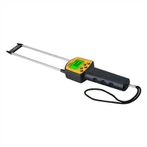Design considerations for switching power supply transformers' common mode inductors
During the design process of the power transformer, engineers need to strictly calculate and complete the common mode inductance design and value selection, which is directly related to the operation accuracy of the switching power transformer. In today's article, we will briefly analyze the design of the common-mode inductance of the switching power supply transformer, and see what problems should be paid attention to during the design and calculation of the common-mode inductance of the power transformer. In the design and production process of power transformers, engineers need to design common mode inductors. There are three basic parameters required, namely input current, impedance and frequency, and magnetic core selection. Let's look at the input current first. This parameter value directly determines the wire diameter required for the winding. When calculating and selecting the wire diameter, the current density is usually 400A/cm³, but this value must change with the temperature rise of the inductor. Typically, the windings are operated with a single wire, which reduces high frequency noise and skin effect losses. In the calculation process, the impedance of the common mode inductance of the switching power supply transformer is generally specified as the minimum value under the given frequency conditions. A series linear impedance provides the typically required noise attenuation. But in fact, the problem of linear impedance is often the easiest to be overlooked, so designers often use a 50W linear impedance stabilization network instrument to test common mode inductors, and it has gradually become a standard method for testing the performance of common mode inductors. However, the obtained results are usually quite different from the reality. In fact, the common mode inductor will first produce a -6dB attenuation per octave at the normal corner frequency (the corner frequency is -3dB produced by the common mode inductor). This corner frequency is usually very low so that the inductive reactance can provide impedance. Therefore, the inductance can be expressed by this formula, namely: Ls=Xx/2πf. There is another problem that engineers need to pay attention to, that is, when designing common mode inductors, they must pay attention to the core material and the number of turns required. Let’s first look at the selection of the core type. If there is a specified inductance space, we will select the appropriate core type according to this space. If there is no regulation, the core type is usually selected at will. After determining the core model of the power transformer, the next job is to calculate the maximum number of turns that the core can wind. Generally speaking, a common mode inductor has two windings, usually a single layer, and each winding is distributed on each side of the magnetic core, and the two windings must be separated by a certain distance. Double-layer and stacked windings are also occasionally used, but this practice will increase the distributed capacitance of the winding and reduce the high-frequency performance of the inductance. Since the diameter of the copper wire has been determined by the magnitude of the linear current, the inner circumference can be calculated by subtracting the radius of the copper wire from the inner circle radius of the magnetic core. Therefore, the maximum number of turns can be calculated by the diameter of the copper wire plus insulation and the circumference occupied by each winding.






